10 Dutch Snacks You Cannot Miss
Categories: Food and Drinks,Latest News
Dutch snacks, Europe’s best-kept secret. They might not have the global fame of Italian or French cuisine, yet, they are delightful, exciting, and packed with history. They offer a flavorful range of experiences, from the crunch of savory bites to the sweet, creamy desserts that’ll make your taste buds dance. Expat Republic is here to guide you through the 10 must-try Dutch snacks waiting to be explored.
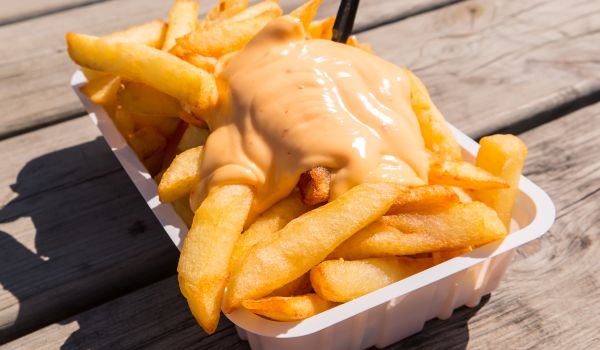
1. Patat (Fries)
Our journey begins with the Dutch version of fries, known as “patat.” But these aren’t just any fries; they are thick, golden, and irresistibly crispy. These fries are usually served in a paper cone, topped with the sauce of your choice. If you want to enjoy them like a Dutchie, mayonnaise is the national favorite. Some find it weird to pair fries with mayo, but we can testify, it’s a delish!
Other sauce options, ketchup, cheese sauce, and even peanut sauce, are not off the menu! If you’re feeling extra adventurous, sprinkle some curry sauce for an authentic experience.
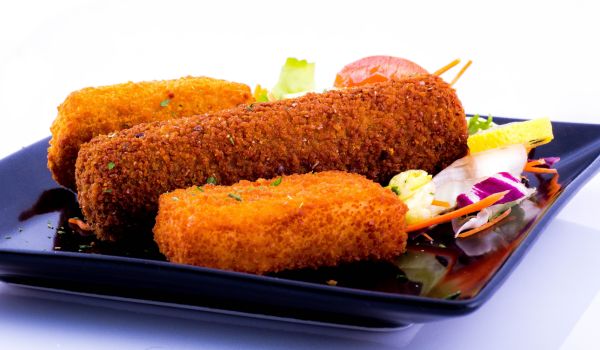
2. Kroket
Now, let’s dive into a Dutch classic, the kroket. You can’t be in the Netherlands without trying kroket. It’s a culinary crime! Imagine a savory, deep-fried roll filled with a creamy, meaty ragout. This is what you call crispy outside silky inside.
Besides being a popular snack, kroket is often served with soft bread or accompanied with fries for a hearty, delicious lunch. The fillings can also vary from pork, potatoes, vegetables, chicken, even noodles!
If you want to savor this delightful Dutch treat in a convenient way, simply visit FEBO, a famous fast-food chain in the Netherlands. Beyond delicious offerings, FEBO allows you to enjoy your kroket on the go.

3. Herring
Most countries have those local delicacies that divide opinions, and for the Netherlands, it’s herring. You either love it or hate it. But if you never try it, then it’s another must-try Dutch specialty to add to your list. Finding a herring stand will not be a problem for you, as they are omnipresent throughout the country.
Contrary to popular misconception, herring isn’t raw. It’s actually been through a little something we call “curing.” They’re partially gutted when caught, then salted and frozen to prevent parasites.
When it comes to the favorite type of herring, Hollande Niewe takes the crown. Why? It’s all about that perfect balance of fat. As the seasons change, so does the fat content of the fish. So you’ll only find Hollande Niewe around May to July when the fish contains just the right amount of fat.
Have you ever wondered why the Dutch love eatigg Herring so much? Our friends at AboutNL.com have the answer.
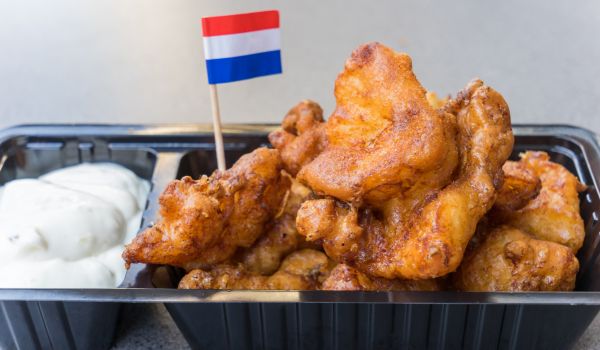
4. Kibbeling
Imagine kibbeling as a Dutch twist of the classic fish and chips. It’s battered chunks of white fish, deep-fried to crispy perfection. Dunk them in rich, mayonnaise-based garlic sauce or a tangy tartar sauce for an extra kick. Despite its humble appearance, kibbeling holds its own delightful treat, especially when it’s still hot, fresh, and crispy.
When you stroll through the streets of the Netherlands, the inviting aroma of fresh kibbeling from haringhuis (herring stands) or vishandels (fish shops) often tempts you. If herring doesn’t suit your taste, these fish nuggets are a tasty alternative.
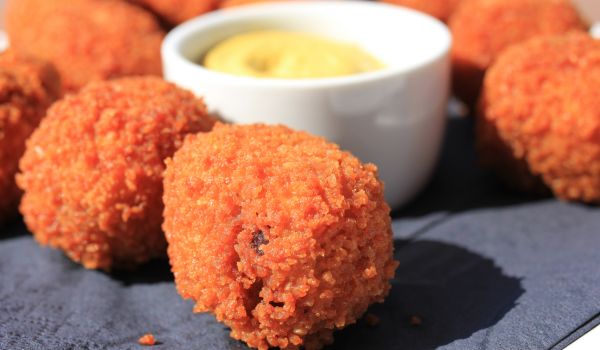
5. Bitterballen
This is another typical Dutch snack served in bars. What’s better to accompany your beer than bitterballen? These are bite-sized, golden orbs of delight filled with a rich beef or veal ragout. Yes, they are basically kroket in a round shape. The best way to eat bitterballen is to dip them in mustard sauce, and you’re in for a flavor explosion. You will keep wanting more.
In the old days, kroket and bitterballen were made from meat leftovers. Today, people rarely prepare them homemade. You can easily find the frozen ones in supermarkets, and enjoy them in the comfort of your home.
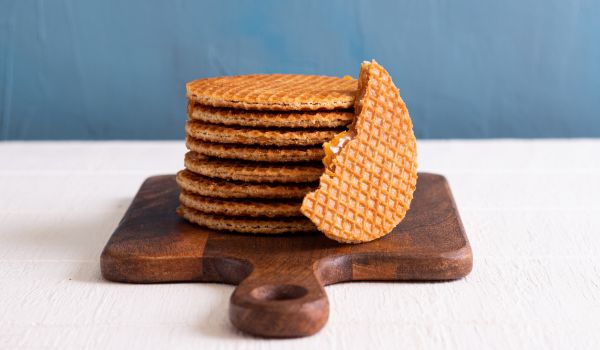
6. Stroopwafels
Now, let’s indulge your sweet tooth with the delectable stroopwafels. These delicate waffle cookies are filled with a sticky caramel-like syrup. For the ultimate experience, warm them over a hot drink to melt that syrup to perfection. The combination of the crispy waffles and the gooey syrup inside is simply irresistible.
Stroopwafels are a beloved Dutch tradition and are readily available from street vendors to supermarkets. But if you want the best, Daelmans Stroopwafels has it all. This family bakery has been making these delicious treats since 1904 and keeping their secret recipe unchanged.
Offering craftsmanship with quality ingredients, they provide a wide range of stroopwafels – from the original, chocolate, to honey, and even mini to jumbo sizes. They even offer customized packaging, making them ideal for gifts and souvenirs to take back home.
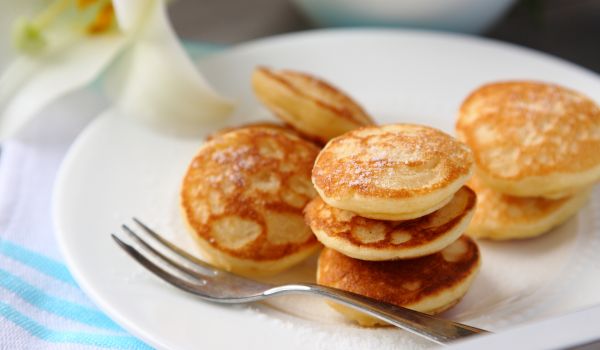
7. Poffertjes
Poffertjes, those tiny, fluffy pancakes, are a Dutch treasure! Served in generous stacks, they’re traditionally dusted with powdered sugar and a pat of butter melting into a sweet, buttery sauce. You can get creative with your toppings and add whipped cream, fresh fruit, or even a hint of rum.
During Christmas and New Year, poffertjes can be found throughout Dutch streets at numerous street carts. Go to a local poffertjes stand and watch them freshly made on a hot griddle. You’ll savor the experience as much as the poffertjes themselves.
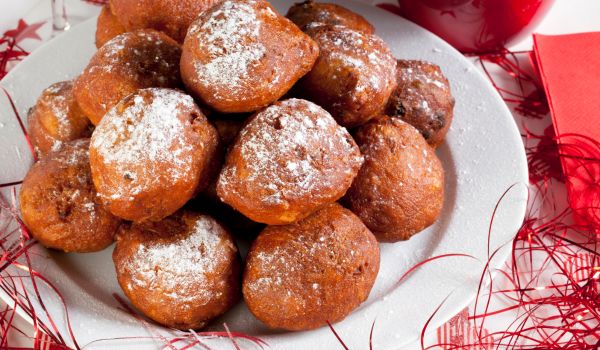
8. Oliebollen
Oliebollen are also especially popular during the holiday period of Christmas and New Year. They are even a staple at Christmas markets throughout the Netherlands. But you can already spot oliebollen stands as early as October, ushering in the festive spirit.
This Dutch doughnut is made from flour, eggs, yeast, mils and baking powder, and deep-fried in hot oil. Hence the name “oliebollen”, literally means “oily balls. A generous sprinkle of powdered sugar on top will make your sweet tooth sing. But like other Dutch snacks, oliebollen come in various flavors, including apple-studded, cherry-filled, and even Nutella-packed.
Pair them with champagne, and you’ll embrace the Dutch winter with open arms.
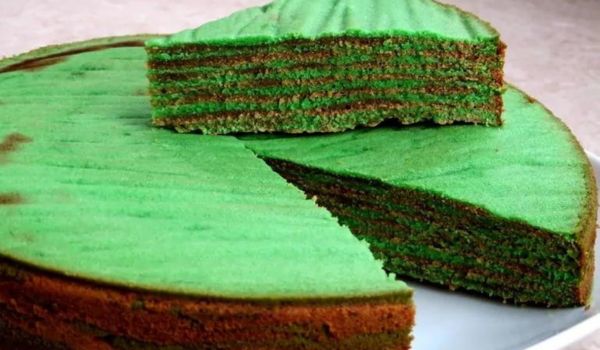
9. Spekkeok
Spekkoek is an intriguing Dutch adaptation of the Indonesian cake “lapis legit”. This layered cake is made from a blend of flour, eggs, butter or margarine. It contains Indonesian spices such as cardamom, cinnamon, and clove. Despite its name “spekkeok” translating to “bacon cake,” it couldn’t taste farther from bacon. The cake has a delightful blend of spices and sweetness.
Each layer is baked separately, making it a long process. That must be why it comes at a higher price. Time is money, after all, right?
In the Netherlands, spekkeok are traditionally served as a dessert in rijsttafel. It can be found in most grocery stores and Asian markets (Tokos).
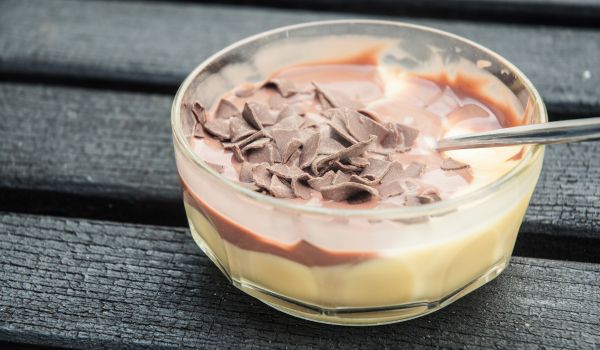
10. Vla
While widely known as Dutch custard, Vla is not a custard nor a pudding. It’s its own dessert with its unique personality. It boasts a smooth consistency, resembling a midpoint between yogurt and pudding.
The authentic way to make vla is to combine eggs, cornstarch, vanilla, milk, and sugar. But the Dutch law has a strict rule to call something vla. In addition to the mentioned ingredients, it must contain at least 50% cow’s milk, and the fat percentage must be at least 2.6%.
This creamy delight is not widely found outside the Netherlands. So go get your vla while you’re in the Netherlands! Head to your nearest supermarket. You’ll often find them placed next to the yogurt section.
Each of these snacks is a tasty piece of Dutch culture, tradition, and history. Each bite draws you closer to the Dutch culinary exploration. Whether you’ve lived here for a while or just starting to explore, these snacks are a delightful way to discover what makes this country unique.
